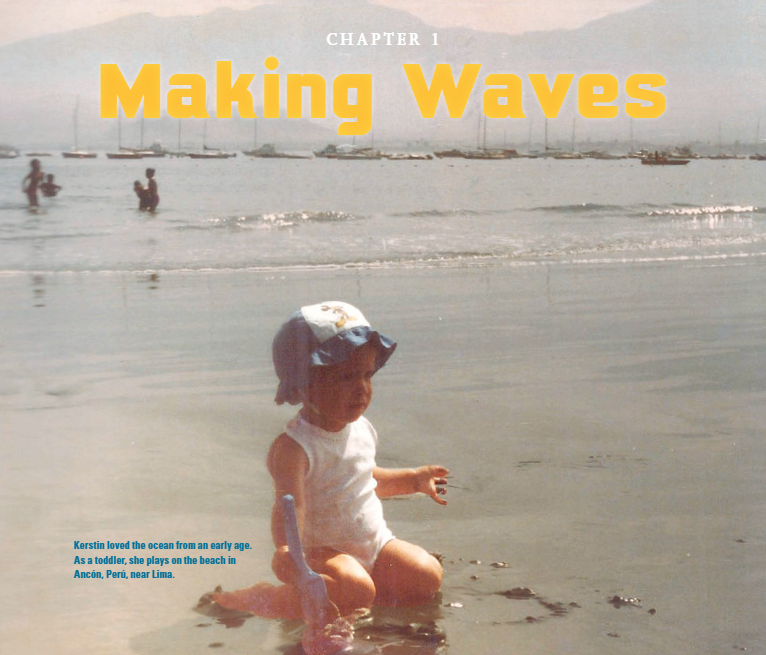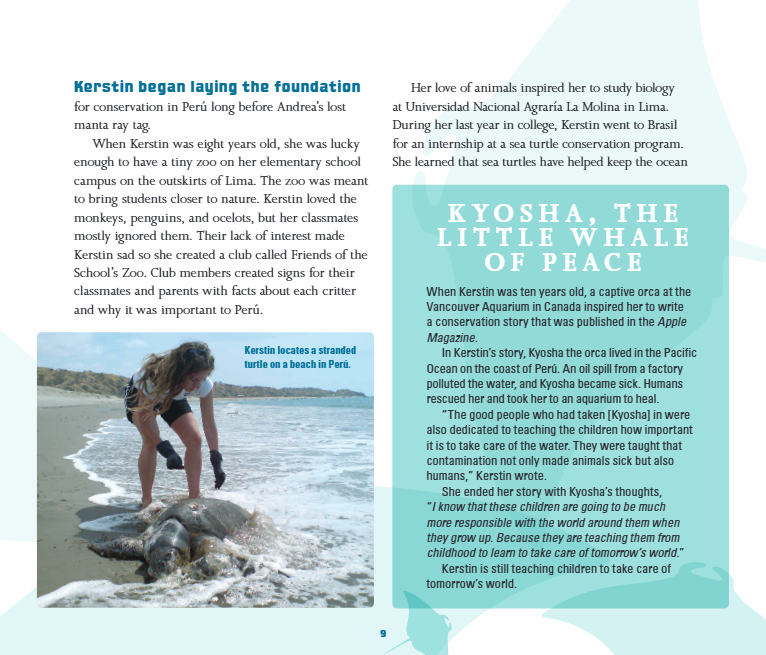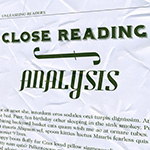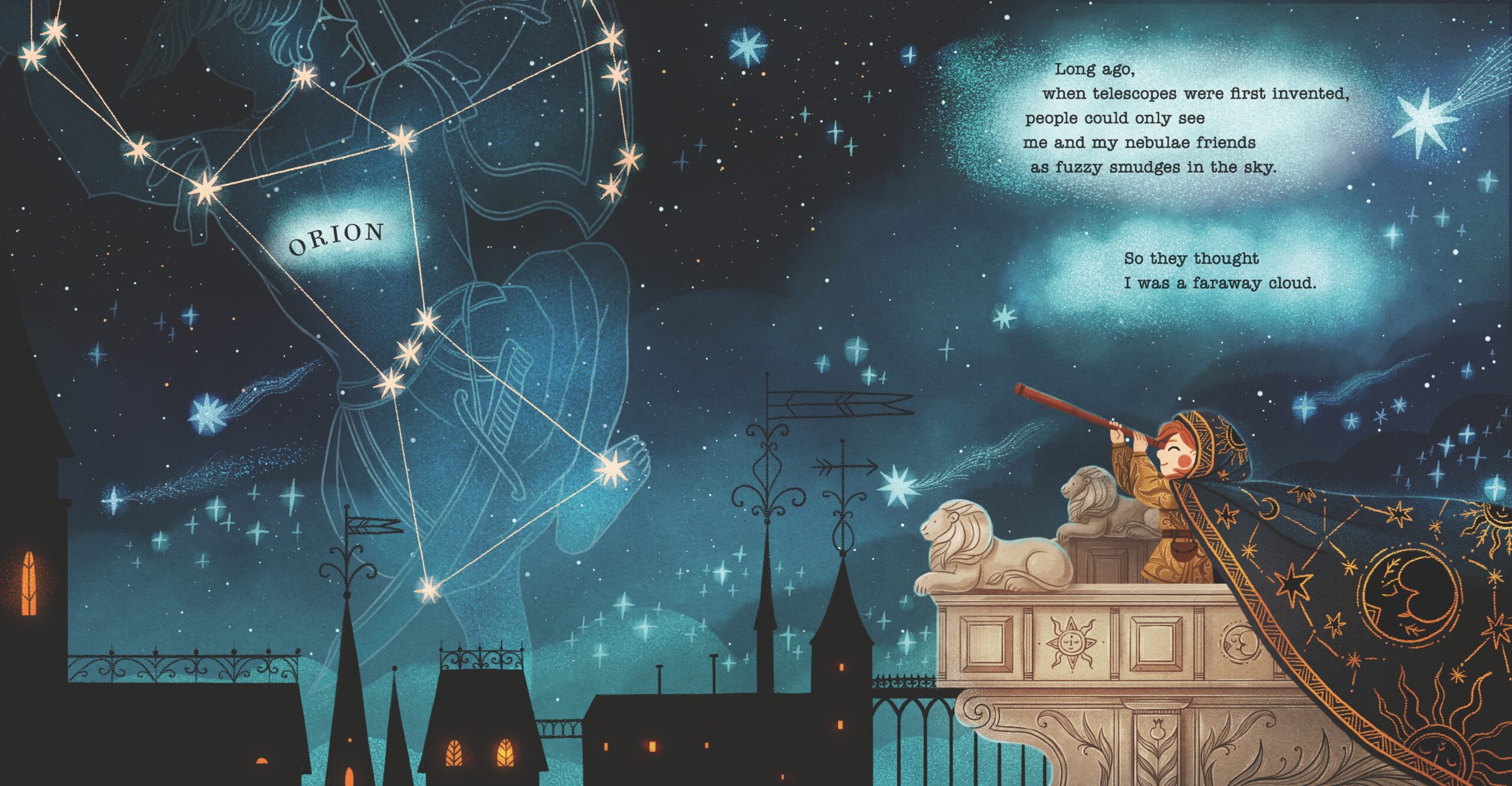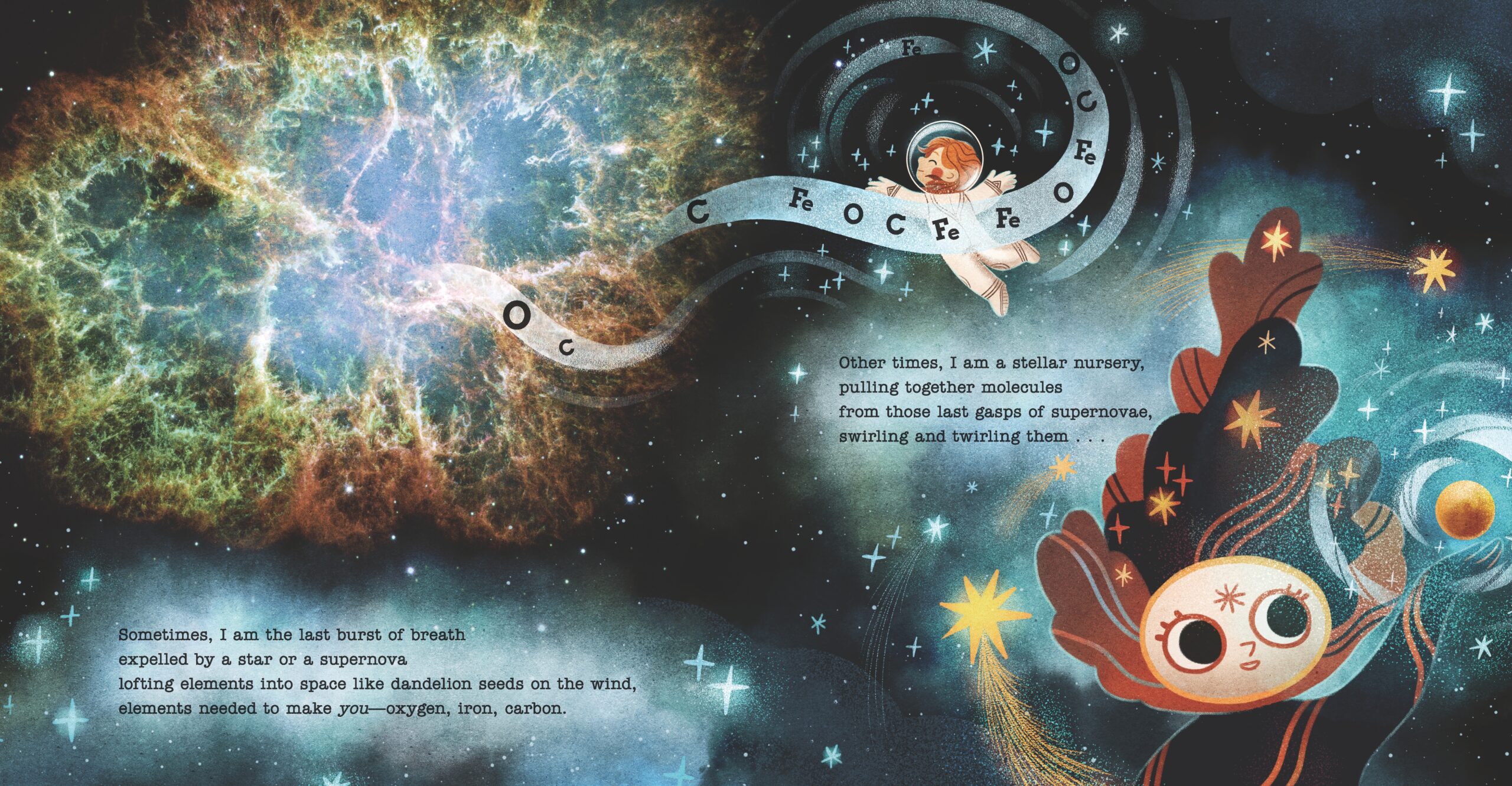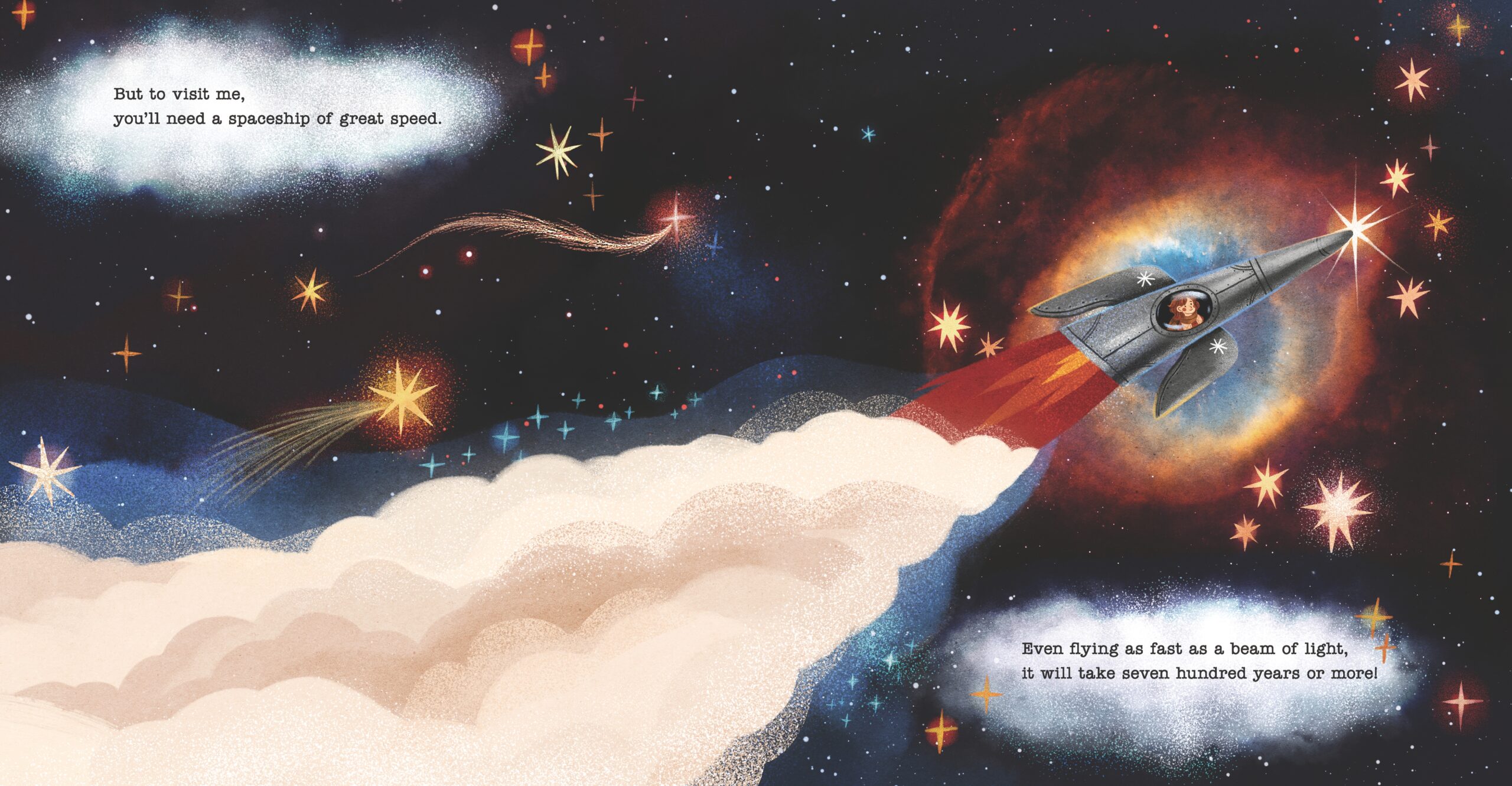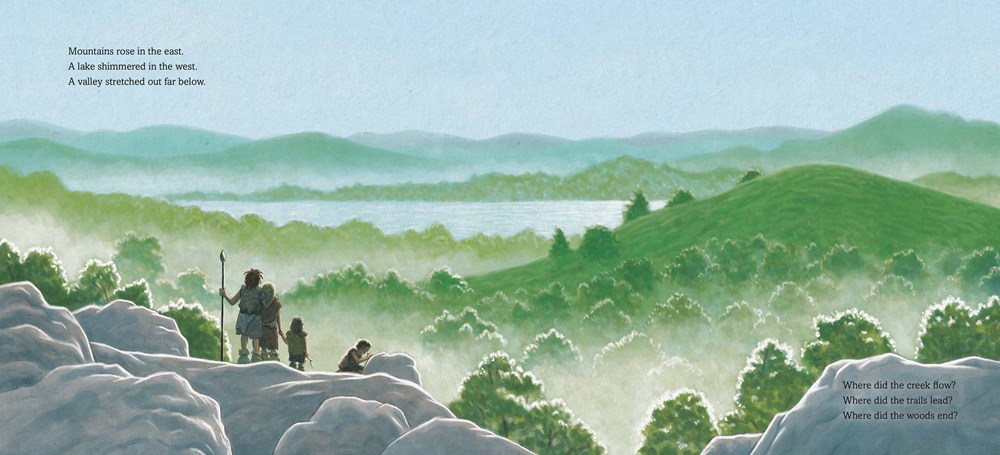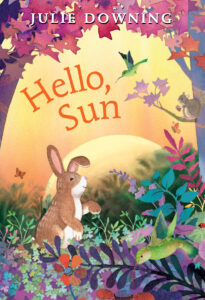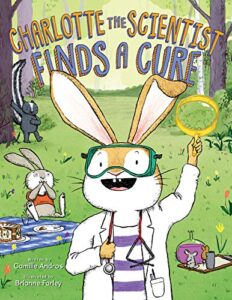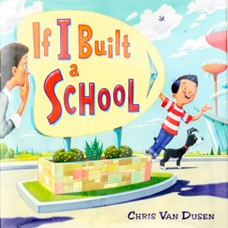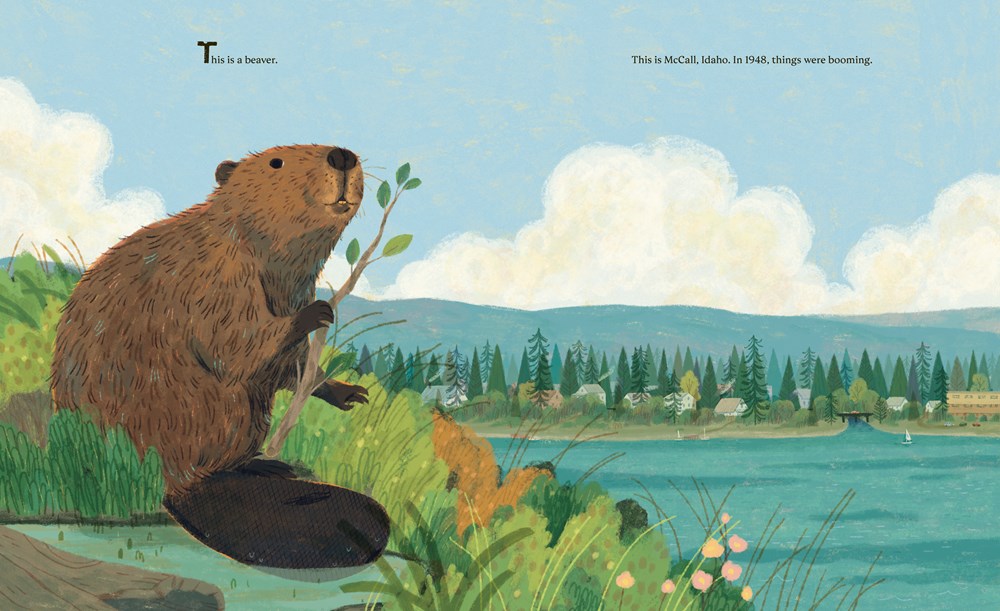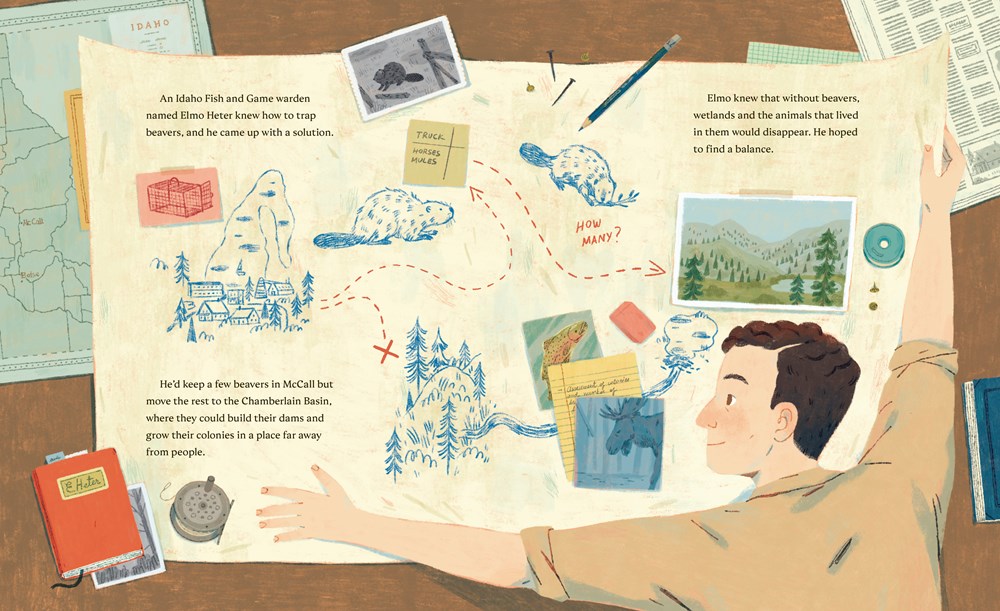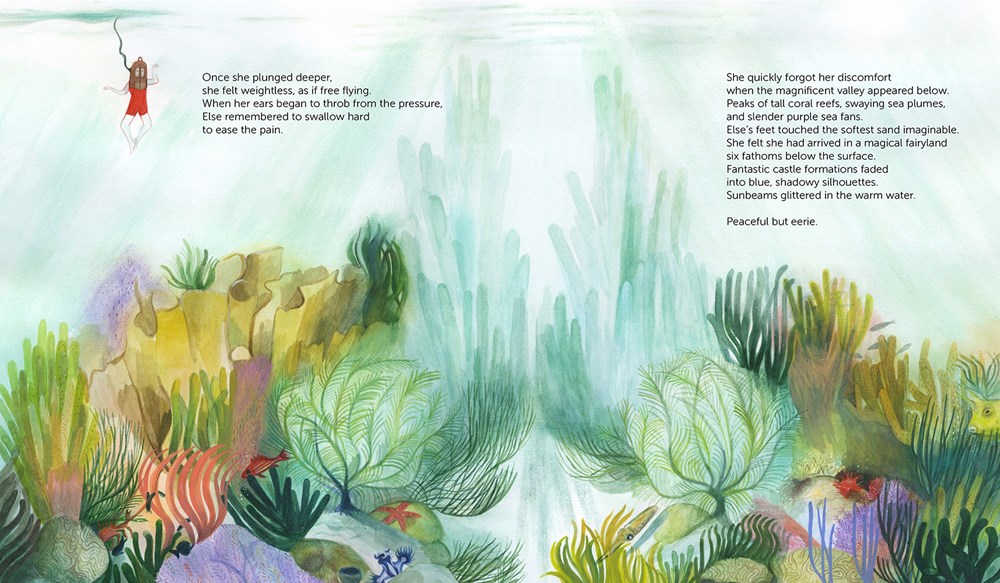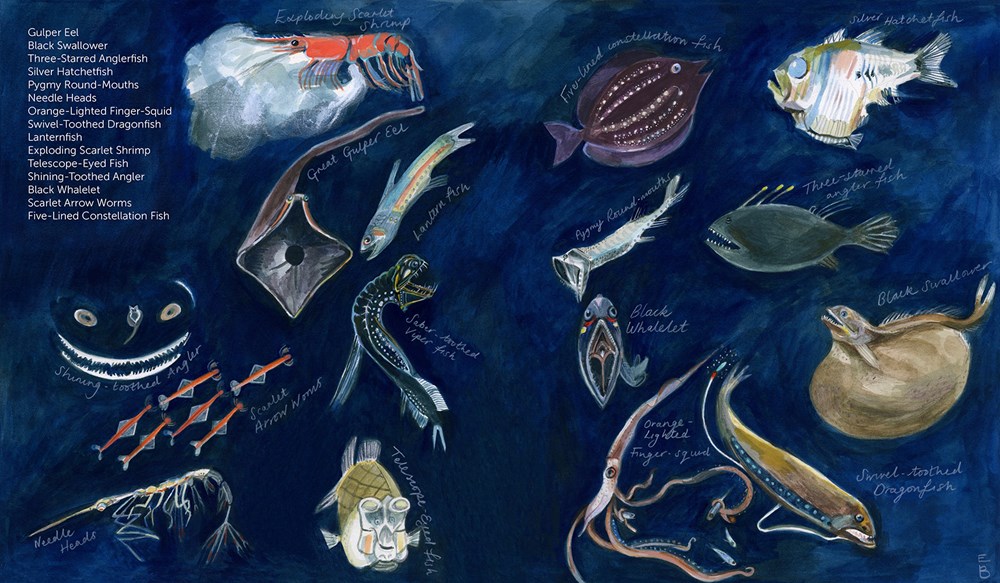Giant Rays of Hope: Protecting Manta Rays to Safeguard the Sea
Author: Patricia Newman
Published October 1st, 2024 by Lerner Publishing Group
Summary: Off the coast of Perú, gentle giants swim beneath the waves. Thanks to the work of Kerstin Forsberg, giant manta rays have become a symbol of hope for ocean conservation in the region. Mantas are a flagship species, and when they’re protected, the whole ocean ecosystem benefits.
Kerstin, who founded the organization Planeta Océano, has taken a new approach to ocean conservation. Previous conservation projects were often led by scientists from other places who didn’t work with the local people. When Kerstin decided to help manta rays, she sought the opinions of local fishers and educated them about the dangers of overfishing, bycatch, and poaching—things that affect both manta rays and fishers. She also involved local schools and teachers.
With the help of teachers, students, and fishers, Kerstin launched a project to identify and track manta rays and protect them, making the ocean a better place for all creatures. Dive in with author Patricia Newman and explore how taking care of the ocean can benefit everyone!
About the Author: Patricia Newman wants us all to know we are part of nature. As a Robert F. Sibert Honor recipient, she shows us how our actions ripple around the world, empowers us to find our own connections to nature, and encourages us to use our imaginations to act on behalf of our communities. Her nonfiction titles have received multiple starred reviews, Orbis Pictus Recommended Awards (NCTE), Green Earth Book Awards, and several Eureka! Awards. She is based in California.
Review: I love learning new things, and Patricia Newman always delves into topics in such interesting ways that will make any reader want to not only read the entire book but also want to investigate further to learn as much as possible about it.
In this book, I dove (pun intended) into the world of manta rays: their uncertain future, their truly phenomenal elegance and uniqueness, and lots of information about environmental factors. I also learned about how much difference one person can make. This book is a call to future activists, a call for all animal lovers, and a call for all humans to see more than what we normally see.
I am also impressed how Newman wrote an entire book about manta rays but by the end, the reader has thought about so much include flagship species, collaboration, negotiation, activism, the ocean in many different ways, cause and effect, and so much more.
Once again a truly fascinating and informative book has been gifted to us readers by Patricia Newman.
Teachers’ Tools for Navigation and Discussion Questions:
In the standards-aligned guide provided by Lerner, educators can find lessons about manta ray anatomy, bycatch simulation, the challenge of overfishing, plotting manta sightings, civic role models, and exploring plankton.
The guide’s objectives are:
- To help students understand our unbreakable connection to the ocean and we affect it.
- To encourage and empower students to become a voice for the ocean in their homes, schools, and communities.
- To help students become better science communicators
The guide focuses on Ocean Literacy Standards & Principles as well as United Nations Sustainable Developmental Goals
You can also access the educators’ guide here.
Book Trailer:
Flagged Spreads:
Read This If You Love: Nonfiction books about animals, environmental issues, and/or conservation efforts
Recommended For:
**Thank you to the author for providing a copy for review!**





